By Crasterfarian
We’ve read a lot recently in articles I’ve written about the importance of water to the Romans. The aqueducts at Cilurnum (Chesters) and Aesica (Great Chesters) were vital, and the lack of water at Housesteads proved problematic. The cultivation of food and animal husbandry was also part of the Roman military machine. As Napoleon said, ‘an army marches on its stomach’…
In its position, perched high on the Whin Sill ridge, the fort of Housesteads (Vercovicium) looks north over empty moorland and south onto a hillside scored with faint horizontal lines. These are not natural features, they are Roman cultivation terraces, the marks of soldiers who turned their swords and spears into spades and ploughs so they could feed themselves.
There was no Morrisons or Sainsburys back then, no cheery delivery driver bringing food to your door. Everything had to be made or grown by hand. A poor harvest meant no food and a starving winter. The cultivation of good nutritious food was imperative to maintain moral and keep up the strength of the soldiers and the wider Roman British people in the vicus. Their story tells us how the Roman occupation reshaped farming, food, and daily life in Britain.
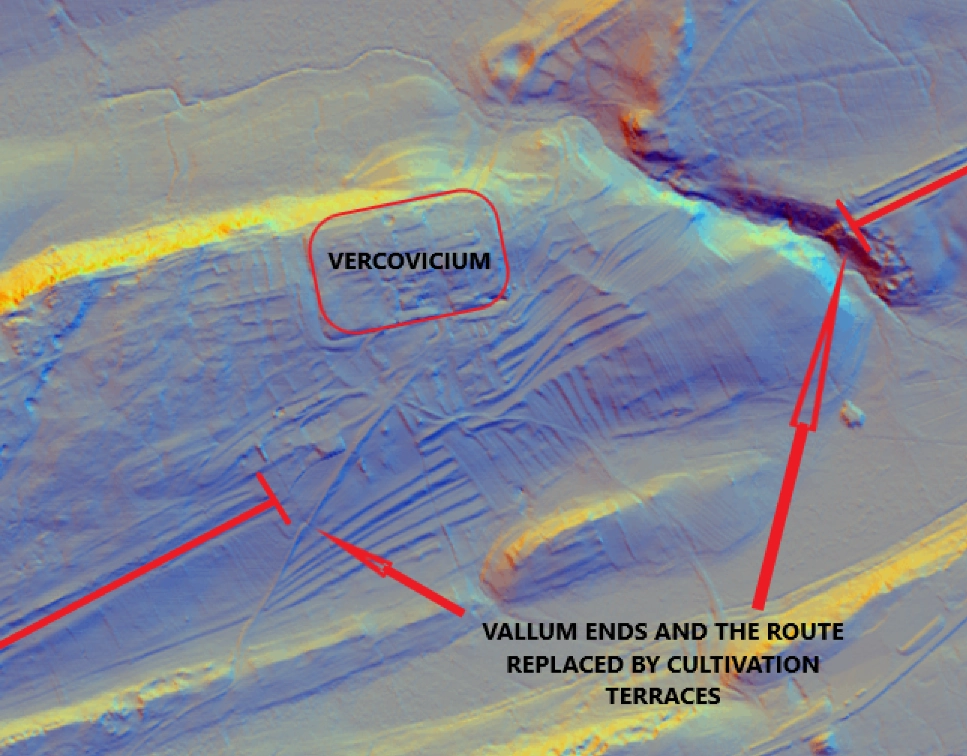
Feeding the Wall
The garrison at Housesteads could number close to a thousand men. That, combined with the needs of feeding livestock, meant production of food was hugely important.
Bulk grain, wine and oil arrived from further south, but the army could not live on convoys alone. Supply lines were always susceptible to attack, meaning deliveries of essential items could be hampered by guerrilla activity from hungry locals. Fresh food was also essential to prevent scurvy, disease and monotony.
The terraces carved below the fort gave soldiers and camp followers patches of level soil to hoe and plant, preventing erosion and trapping water in the thin upland ground. But recent LiDAR surveys add another twist. The line of the Vallum, the great earthwork that runs south of Hadrian’s Wall, shows a conspicuous gap at Housesteads. Archaeologists now suspect sections were deliberately ploughed out to create more arable land. If so, it marks a telling shift: what began as a grand military barrier was later sacrificed to the daily need for food. Sustenance came before defence
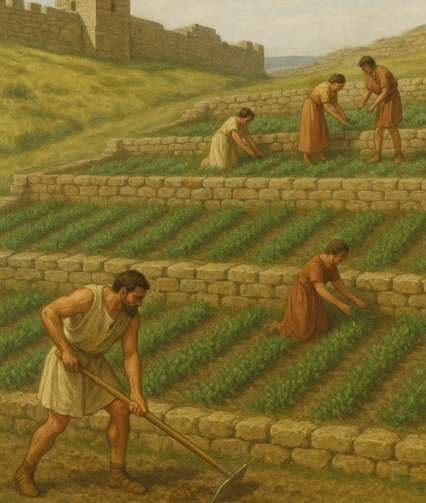
Soldier-Farmers and Civilian Allotments
Roman legions never maintained “farm regiments”. They had architects, surveyors, skilled masons and woodworkers, but no record has been found of farming being part of the multi-skilled Roman legions.
Soldiers were expected to fight and build, but also to cook, mend and dig. Small gardens and vegetable plots were a normal part of garrison life. Many of the enlisted men would have been from rural backgrounds and would have had all the skills required to grow their own food. While families in the civilian vicus just outside the walls added to this, growing food and trading it back into the fort.
Larger Roman towns nearby like Corstopitum (Corbridge) would be market hubs for the sale of all sorts for goods form slaves to grain and meat.
What the Romans Grew
On the terraces and in surrounding farms the Romans introduced or expanded a wide range of crops that are still part of the British diet today:
- Cereals: barley, oats, rye, spelt and bread wheats.
- Peas, beans, lentils
- Vegetables & herbs: cabbage, lettuce, onions, garlic, celery, coriander, fennel, parsley, dill.
- Chives: introduced by the Romans; wild clumps still linger along the Wall.
- Orchards & nuts: cherries, plums, mulberries, walnuts, chestnuts.
- Flax: cultivated for both linen and oil.
- Vinyards too perhaps, they had them in the south of Brittania
This variety stood in stark contrast to the simpler Iron Age diet of barley, meat and gathered fruit.

New Tools and Methods
Roman agriculture was more systematic than the native tradition. Innovations included:
- Crop rotation and manuring to keep fields fertile.
- Iron ploughshares and coulters that bit deeper into heavy soils.
- Drainage ditches, terraces and irrigation that reshaped the land for better yields.
- Selective breeding for larger cattle and horses.
New Animals in the Landscape
The Romans changed livestock as well:
- Chickens became everyday egg and meat birds.
- Geese, pigeons and doves were kept for food.
- Cats were spread as mousers.
- Fallow deer were introduced for venison in parklands.
- Rabbits were attempted but did not establish until Norman times.
- Horses were bred more carefully to support cavalry and wagons.
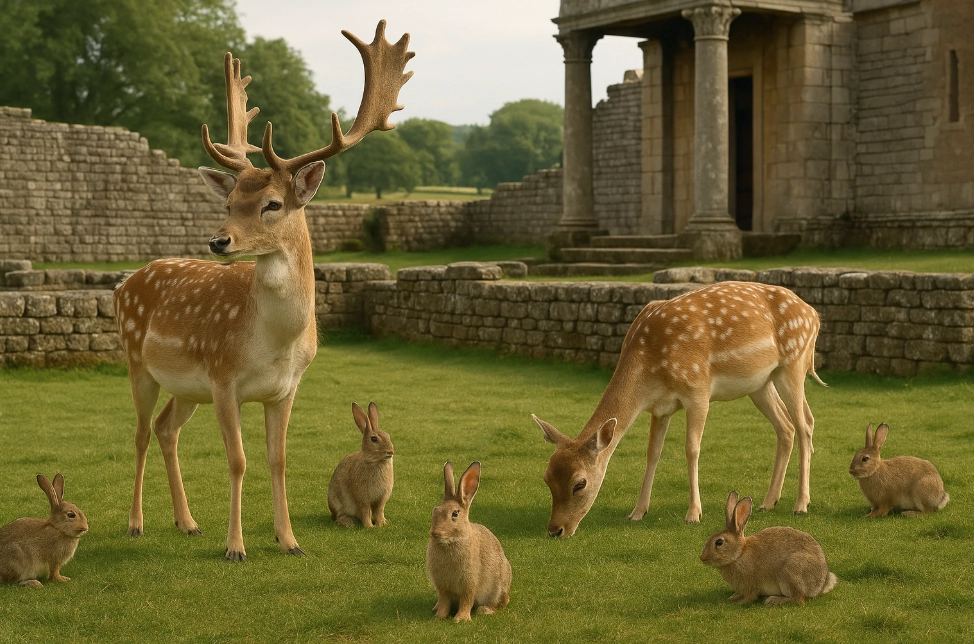
Fermented Fish Sauce
Nothing captures the Roman palate like garum, a fermented fish sauce.
Made by salting fish in vats and leaving it to liquefy in the sun, the prized liquid was bottled and shipped across the Empire. Maybe it was made locally too as fish like herring and mackerel would have been plentiful and contain the oil required to produce the pungent mix favoured by the Roman pallet.
At Hadrian’s Wall, amphorae fragments prove that garum was imported from southern Spain and Gaul. To the Britons, garum must have been shocking, pungent, salty, and alien. To Romans, it was comfort food. Whether stirred into beans, drizzled on bread or dashed onto fruit, garum was the taste of Empire, carried all the way to Housesteads.
Fish sauce is today a staple in countries like Thailand and is an important ingredient in many of the dishes we all know and love. I love a tin of anchovies now and again — they are salty and addictive. The Crasterfarian in me bursts out now and again — kippers and other cured fish are big favourites of mine. You can’t beat a big bowl of kedgeree to sooth away a hangover…
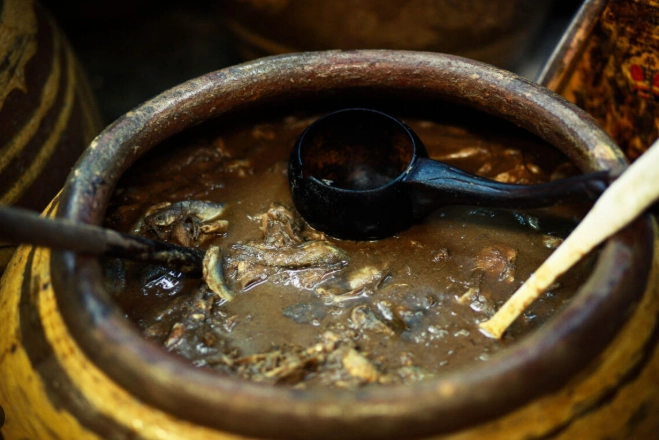
A Changed Palate
Before Rome, Britons ate cereals, pork, mutton, beef, hazelnuts and berries. We were essentially boring eaters.
After Rome, the diet broadened: garlic and onions in the pot, dill and coriander for flavour, cherries and nuts in orchards, chicken and venison on the spit. Olive oil, wine and garum arrived in amphorae.
At nearby Vindolanda, wooden writing tablets even list food orders that would have seemed unimaginable in pre-Roman Britain.
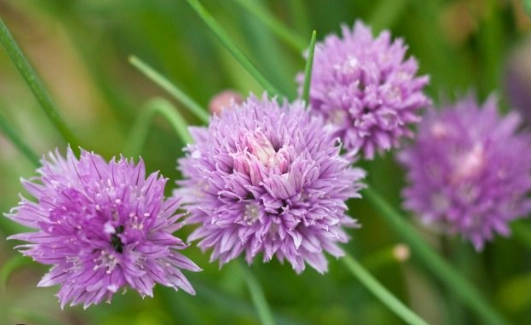
Legacy in the Landscape
The terraces below Housesteads and the ploughed-out line of the Vallum itself are not just farming traces, they are signs of a frontier adapting to survive, changing to suit the circumstances.
They show how the Empire’s greatest earthworks could be sacrificed for beans and barley, how military precision bent to the rhythms of sowing and harvest and the needs of its people.
Housesteads reminds us that the Roman army was more than a fighting machine. It was a community that dug, sowed and harvested as much as it patrolled and fought.
So next time you visit the Wall, I’m not going to say exactly where but west of Aesica (Great Chesters) towards Walltown Crags, and you see wild chives growing, their heady onion and garlic scent in the air and their beautiful pink and purple flowers, just spare a thought for the people that brought them to our shore and forever changed the way we eat.
With love from the Crasterfarian XX


“Garum was the taste of Empire”
There’s an interesting continuity here in that one place where garum survives, albeit adapted, is South-East Asia, as mentioned in the article. It is something in various forms you find on restaurant tables and called ‘kicap’ in Malaysia and Singapore. This relish inspired both Worcestershire Sauce and tomato ketchup, both of which were given a global reach again as products of Empire…
One must wonder how much ‘spare’ time the Roman soldiers had on their hands up here in the north. One can’t imagine they saw much in the way of military action – though they would have had regular training, etc. I would have thought they’d have had plenty of time for farming and other non-military stuff.